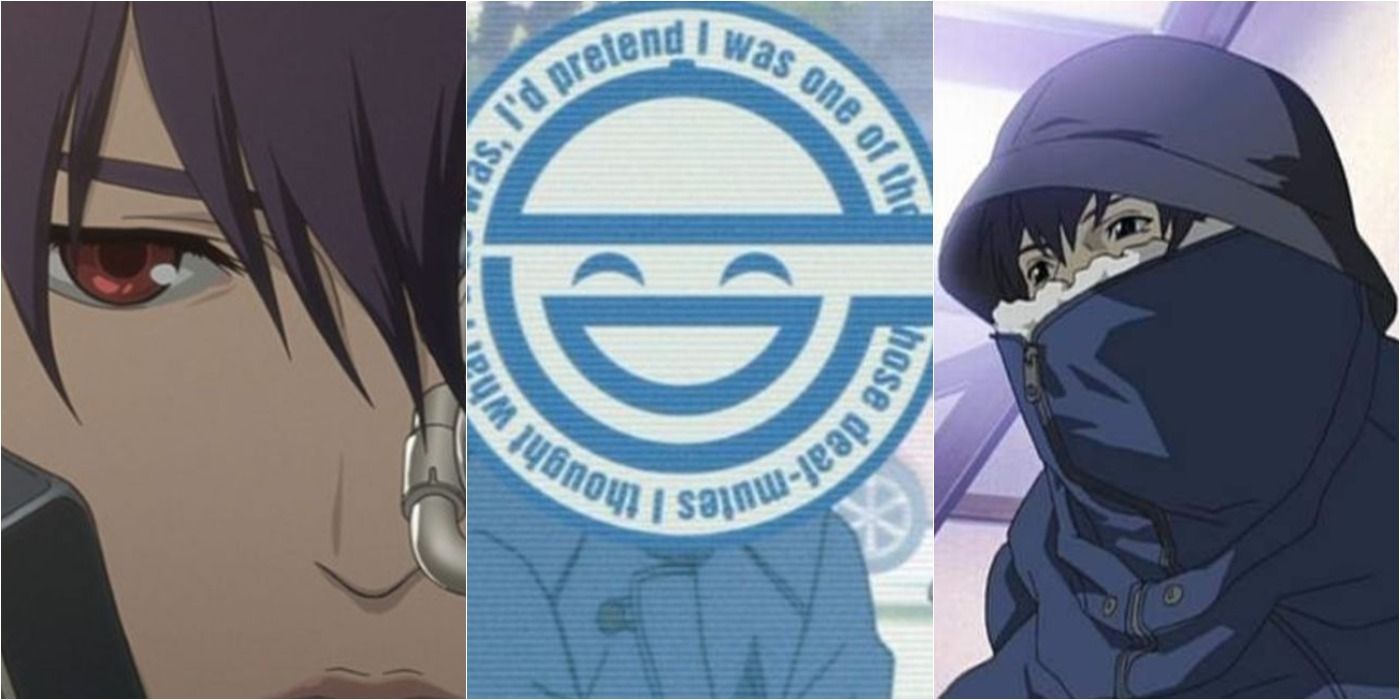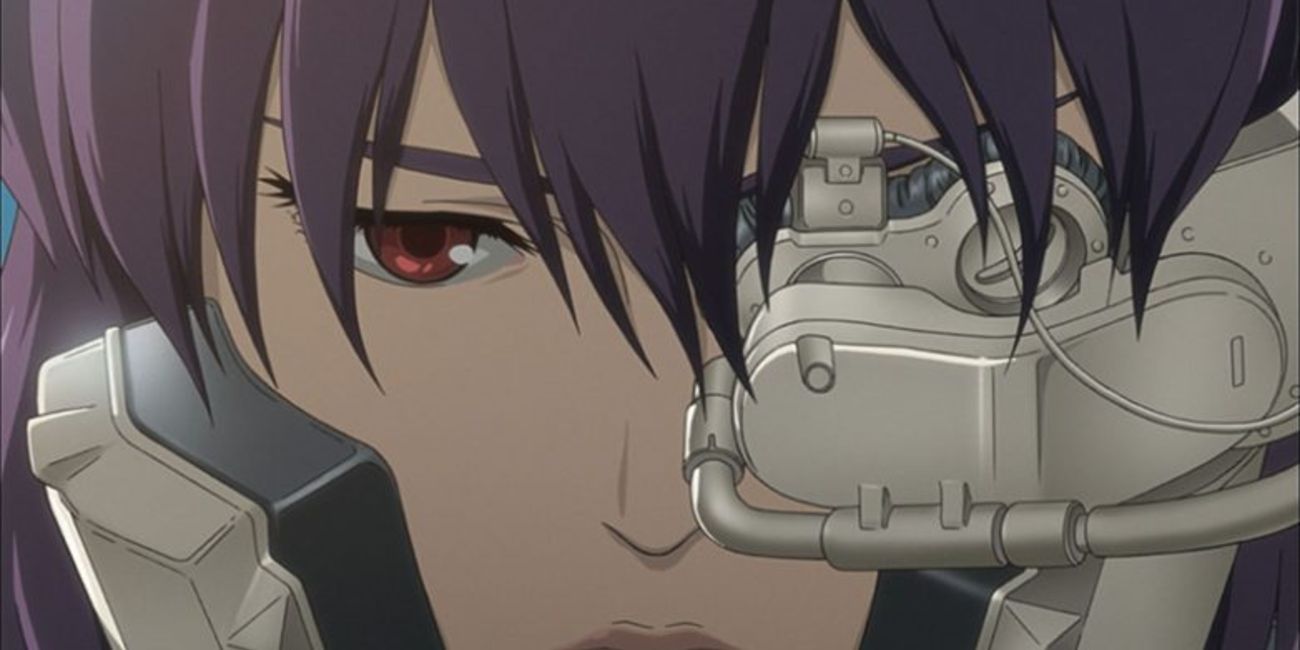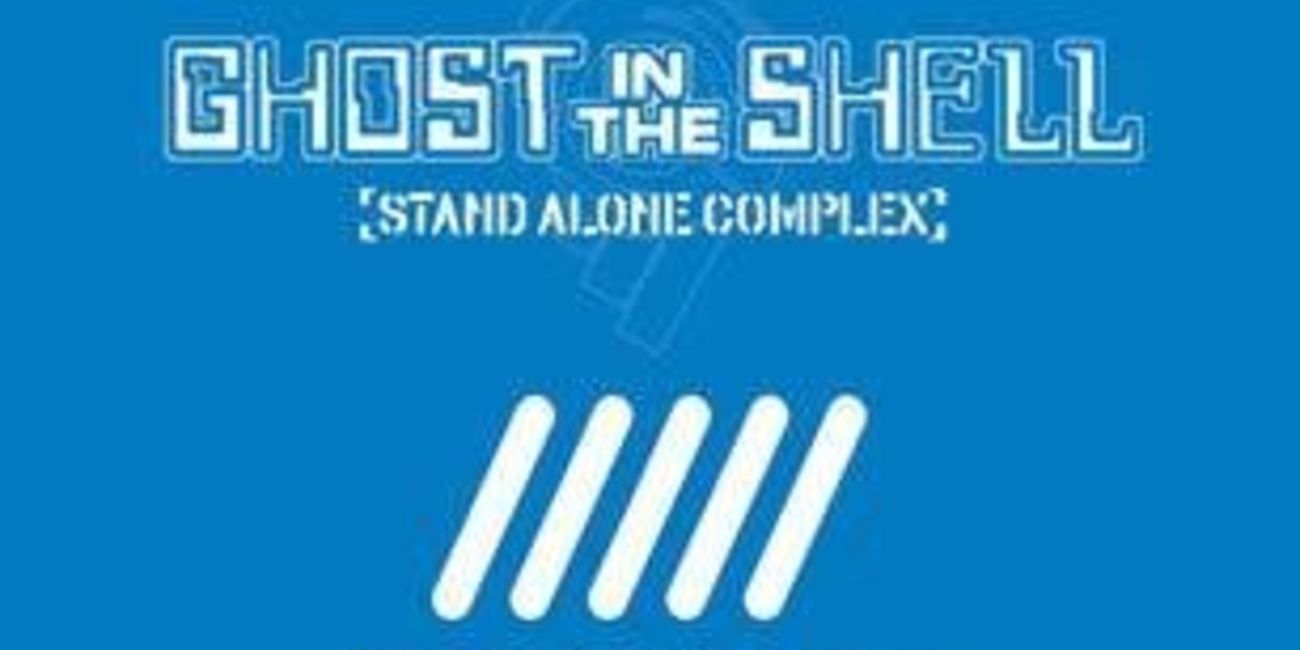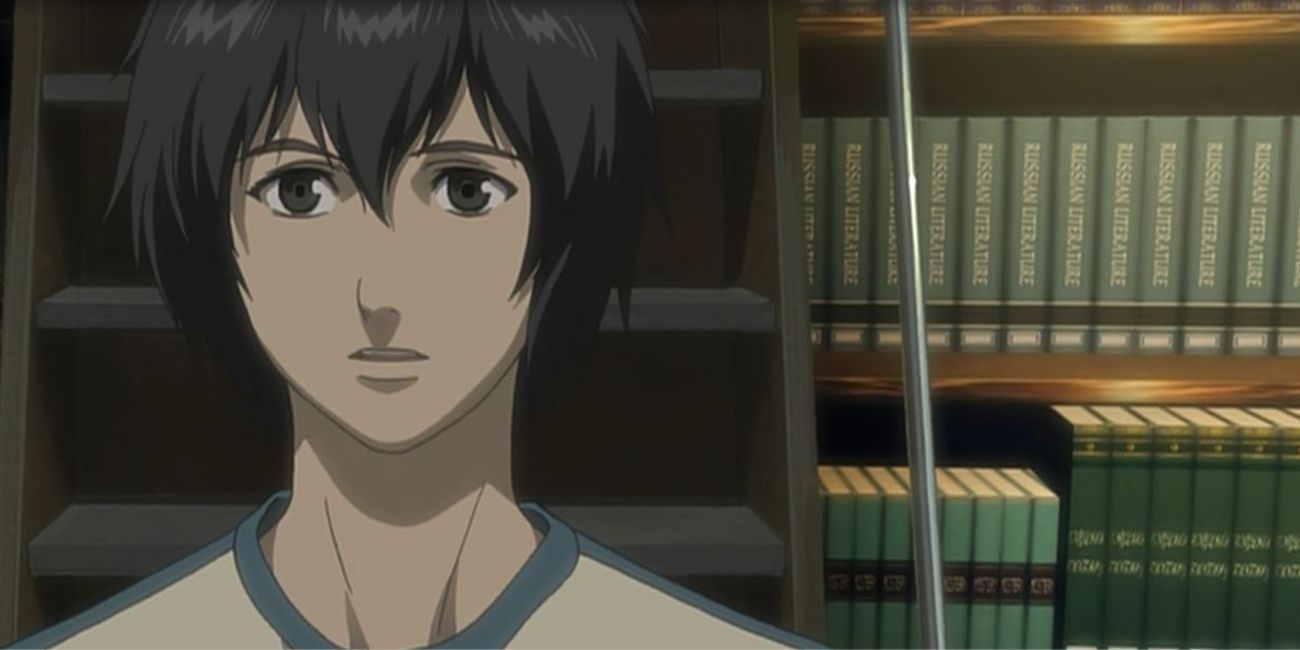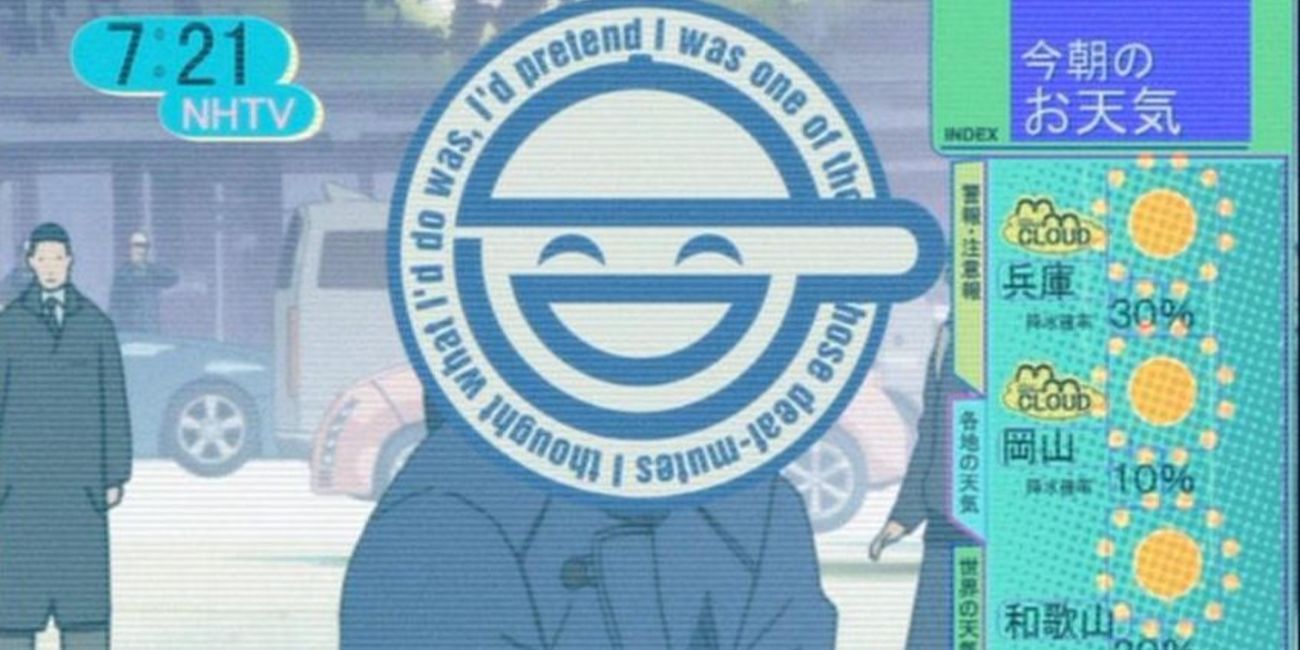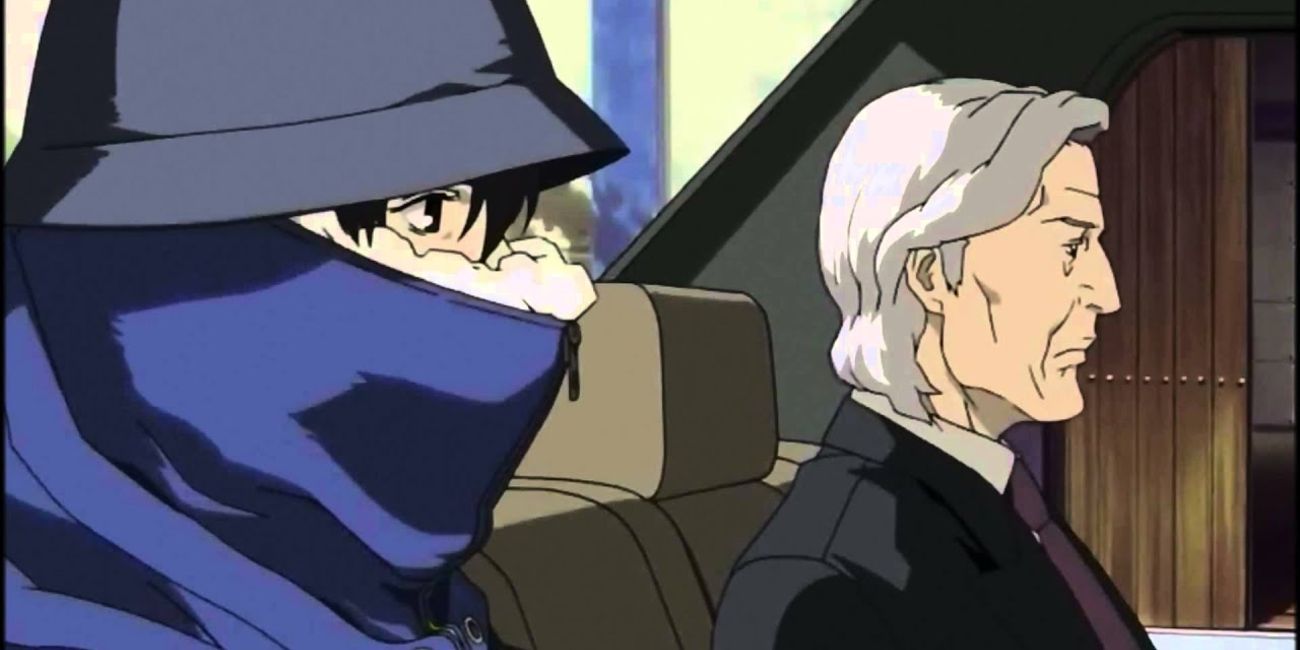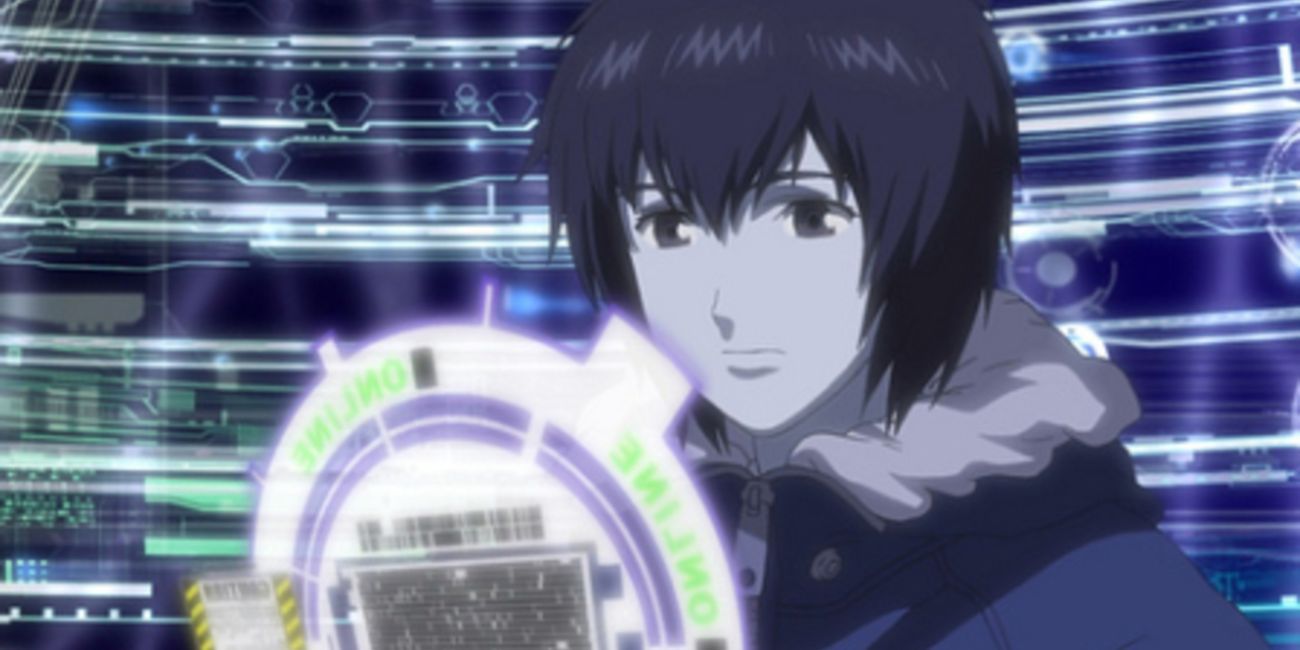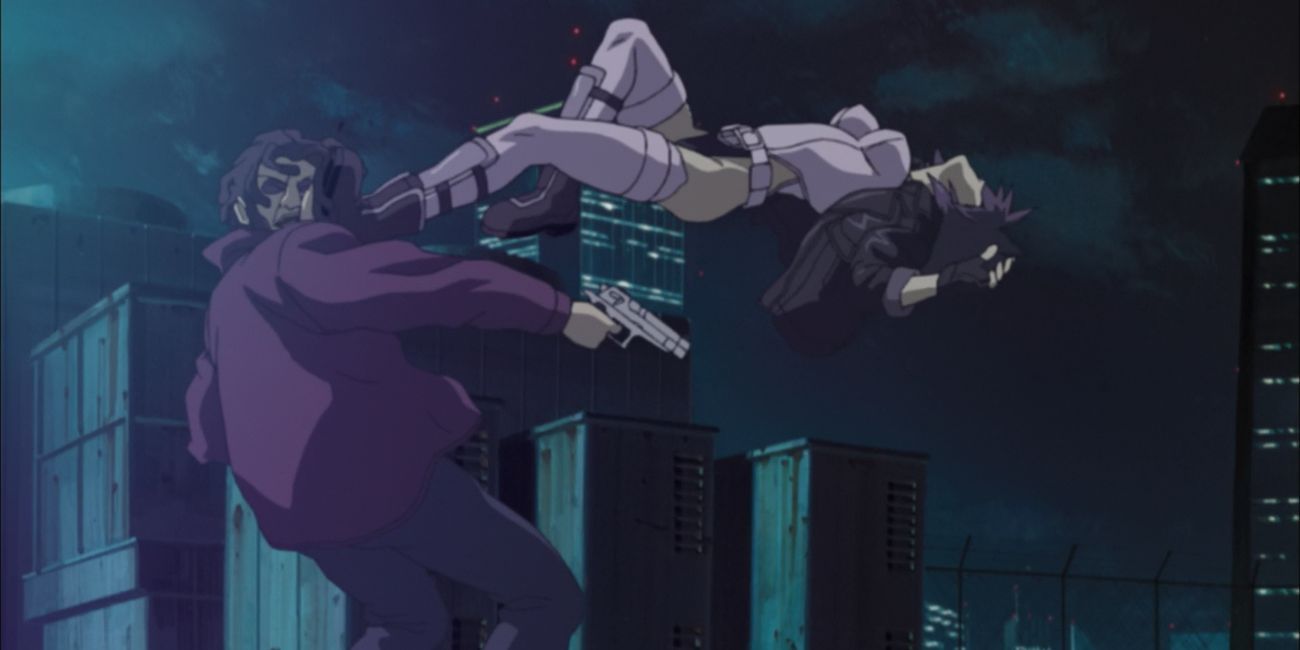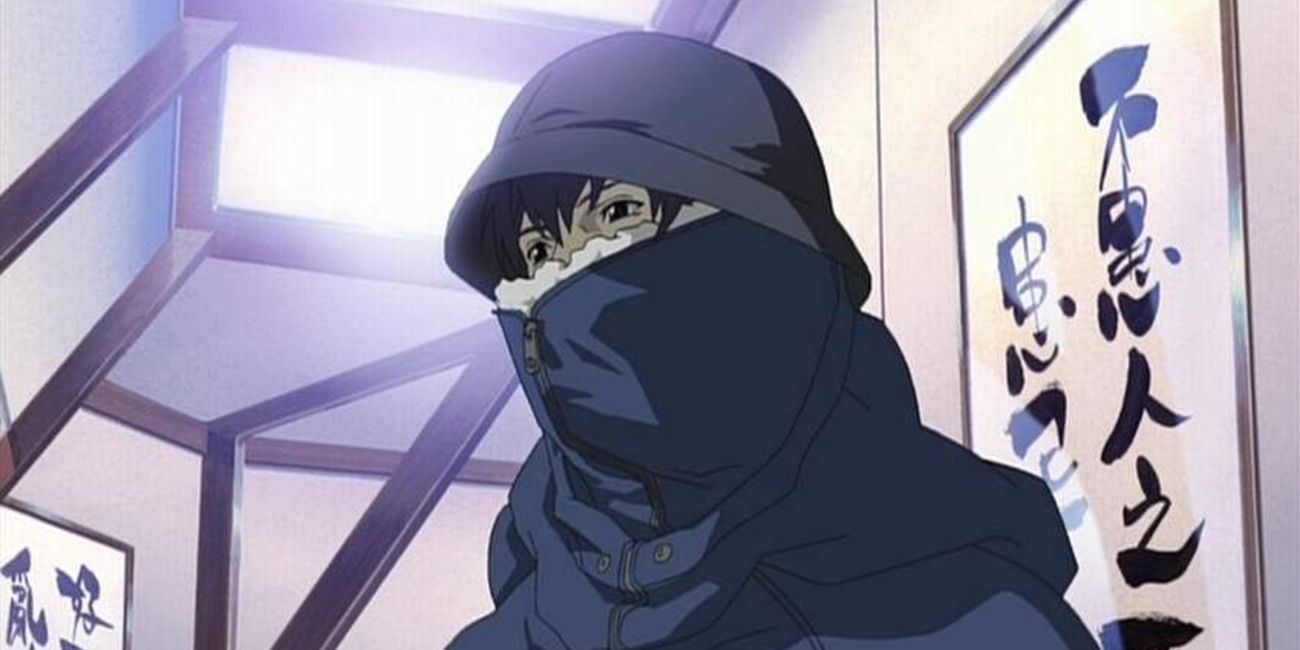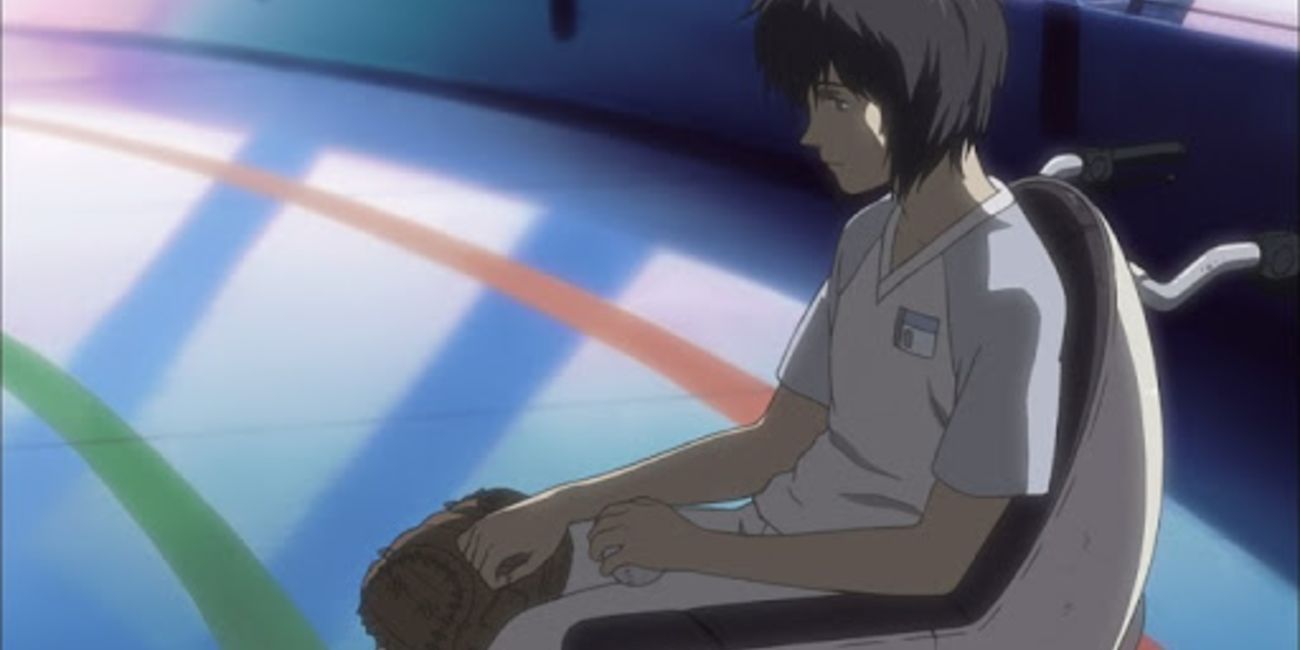Since the resounding worldwide success of the original 1995 Ghost in the Shell anime, there have been several spinoff series. One of the most popular storylines to emerge from its cyberpunk universe comes from season one of Ghost in the Shell: Stand Alone Complex. Throughout the season, elite police task force Section 9 attempts to uncover the identity of the ingenious cyber-hacker the Laughing Man.
The Laughing Man has resonated with fans of the series for being an intelligent adversary that functions as a precursor to meme culture and the internet counter culture generally. When creating the character, developers of the show used various cultural allusions to craft the character's aesthetic and worldview. This intertextuality adds to the character's mystery.
Activist Groups Have Adopted The Laughing Man Logo
Similar to how the Guy Fawkes mask from V for Vendetta has become a symbol of the counterculture, online groups are using the Laughing Man logo as a rallying banner that represents their cause, whether for better or worse. Notable among these groups are the Electronic Frontier Foundation, which is a not-for-profit activist organization that champions online civil-liberties. A loose collective of anarchical cybercriminals who identify as Anonymous also uses the Laughing Man logo, among other pop-culture inspired symbols.
AoI Merges With Motoko
In the final scene of the season when Motoko and Armaki confront AoI, the two Section 9 members are never shown together until they walk away. As someone who can hack people's eyes, there are predictions that AoI is not present in the final scene. Instead, he has merged with Motoko during her body swap, so the scenes of the two speaking together are a projection, and Motoko is actually speaking to herself.
Furthermore, Motoko and Armaki are not shown together until the end because AoI is hacking Armaki's, and therefore indirectly, the viewer's perception of events.
Creators Have Consolidated The Laughing Man Story Arc into an OVA
Simply entitled Ghost in the Shell: Stand Alone Complex - The Laughing Man, director Kenji Kamiyama has assembled the central events of the Laughing Man story arc into a single movie. For those who prefer movies over television or don't have time to commit to a twenty-six episode plot, the original video animation (OVA) does a great job of condensing the story without missing essential details. Do be sure however to clear your evening schedule, since the OVA has a running time of 160 minutes.
The Laughing Man Alias Was Inspired by a J.D. Salinger Short Story
The name of the Laughing Man has its basis in literature. At the end of season one of Ghost in the Shell: Stand Alone Complex, the Laughing Man shares his affinity for books, philosophy, and movies with Mokoto. The famous author of The Catcher in the Rye, J.D. Salinger, wrote a short story named "The Laughing Man," so the well-read cyber hacker's terrorist persona is an allusion to the short story. Further references from the story occur throughout the Laughing Man story arc. Like the children from the Ministry of Health and Labour's Rehabilitation Center who refer to the Laughing Man as "Chief," the role model of Salinger's protagonist also has the same name.
The Laughing Man Logo Also Has Its Basis in a J.D. Salinger Short Story
When London based graphic designer Paul Nicholson received the brief describing his task for the project, he was struck at how surprisingly simple yet peculiar his job was. In the letter, director Kenji Kamiyama instructed him to read the story "The Laughing Man" by J.D. Salinger and to design a logo based on the details of the story. Since the story focuses on a minor league baseball team, Nicholson included elements like the baseball cap that recalls the source material of his design. The cryptic quote surrounding the perimeter of the logo also comes from The Catcher in the Rye.
The Laughing Man Logo Is Also a Parody of the Starbucks Mermaid
In an easily missable line, the Laughing Man sneaks in a reference to the coffee house chain Starbucks. He mentions that he modeled his cyber-hacking trademark on the Starchild Coffee Company during an inconspicuous meeting at one of their coffee shops. The Starchild Coffee Company is a parody of the corporate coffee enterprise where many people around the world enjoy purchasing their morning cup of joe. Considering the Laughing Man's motivation to disrupt the corporate world order, it is only appropriate that he ironically adopt the logo for his own inflammatory purposes.
The Laughing Man Perceives Popular Culture as Phony
Much to the Laughing Man's annoyance, his logo gains traction as a banner of civil discontent that members of the general public rally behind. The popularity of the Laughing Man logo as a symbol for demanding government transparency becomes a point of resentment for the Laughing Man, condemning the public's use of the logo and their aims as phony. Although the political rallying cry of the public aligns with his own, The Laughing Man's criticism of them clarifies that his political motivations are only a disguise for his misanthropy.
The Laughing Man Threat Overlaps with the Original 1995 Anime
The mythology of season one of Ghost in the Shell: Stand Alone Complex occurs before the original 1995 anime movie that focuses on the cyborg hacking villain the Puppet Master. Whereas the Puppet Master plot occurs in the year 2029, the origins of the Laughing Man are traced to the year 2024.
At that time the logo of the Laughing Man first surfaces after he assaults the CEO of Serano Genomics. He then remains underground for six years, during which time the Puppet Master threat occurs, then resurfacing in 2030 when the television series is set.
The True Identity of the Laughing Man Is an Anagram
The modern-day Laughing Man is discovered to be a precocious and intellectual youth whose name is suspected to be AoI. Whether this name is also an alias is not clear. The first and last letters form the acronym "AI", obviously meaning artificial intelligence. Theory has it that AoI's name hints at the idea that he is not the original Laughing Man, and that the true cyber-hacker is an unidentified form of artificial intelligence.
The True Identity of the Laughing Man Is Not Certain
When AoI confesses the inspiration and origins of his crimes to Mokoto and Aramaki at the end of the season, he explains that he was initially thrust into action after discovering a file that outlines the atrocities and corruption committed by corporations. Who created the file however remains a mystery. Among the leaders of Section 9, the original publisher of this incriminating file is the true Laughing Man.

